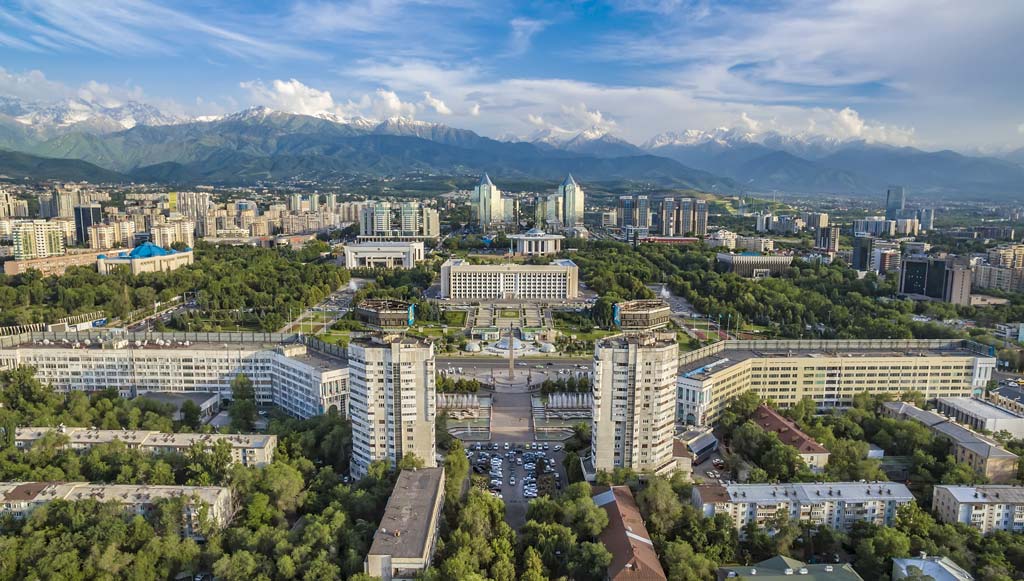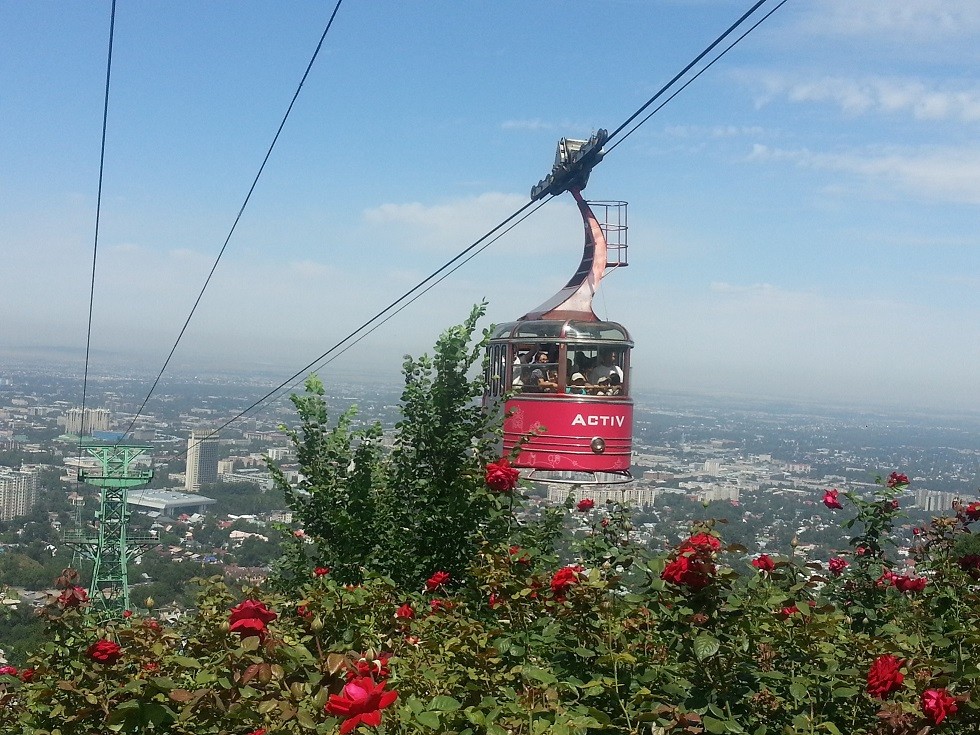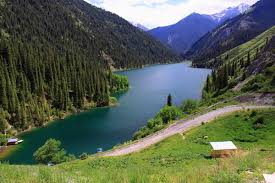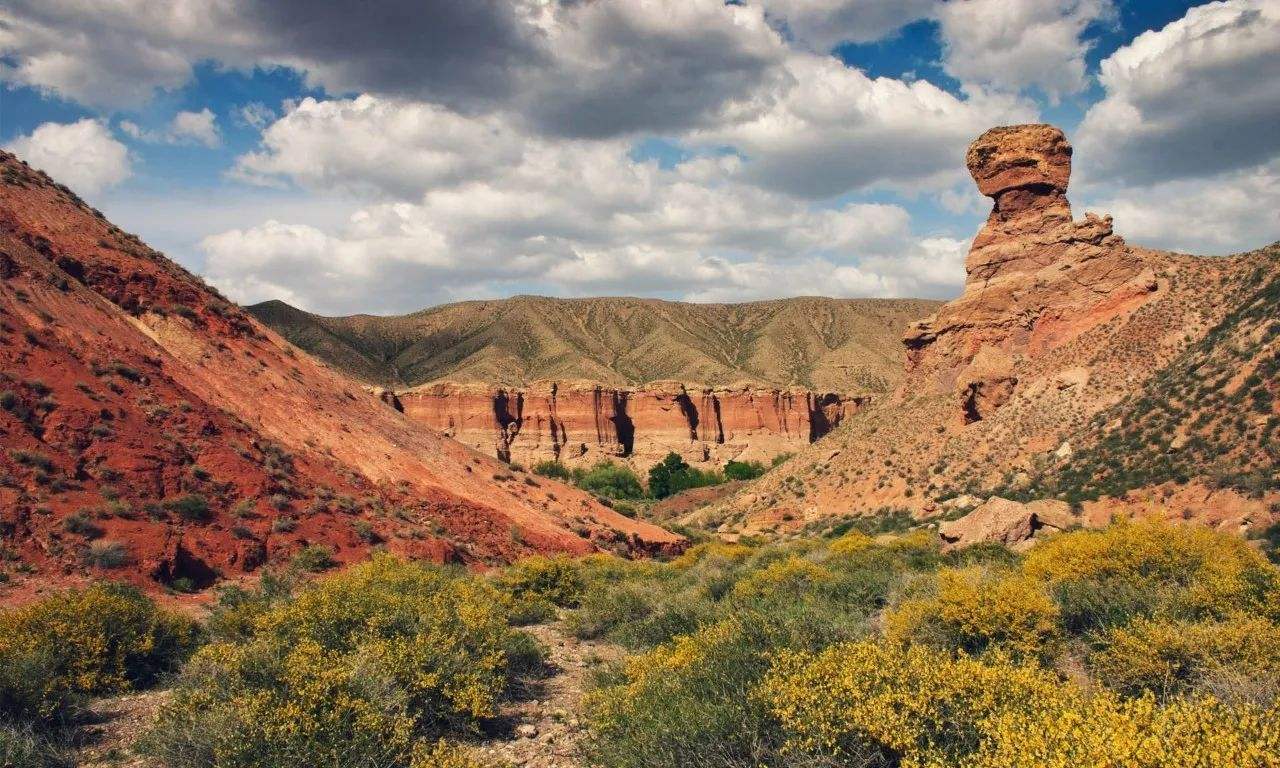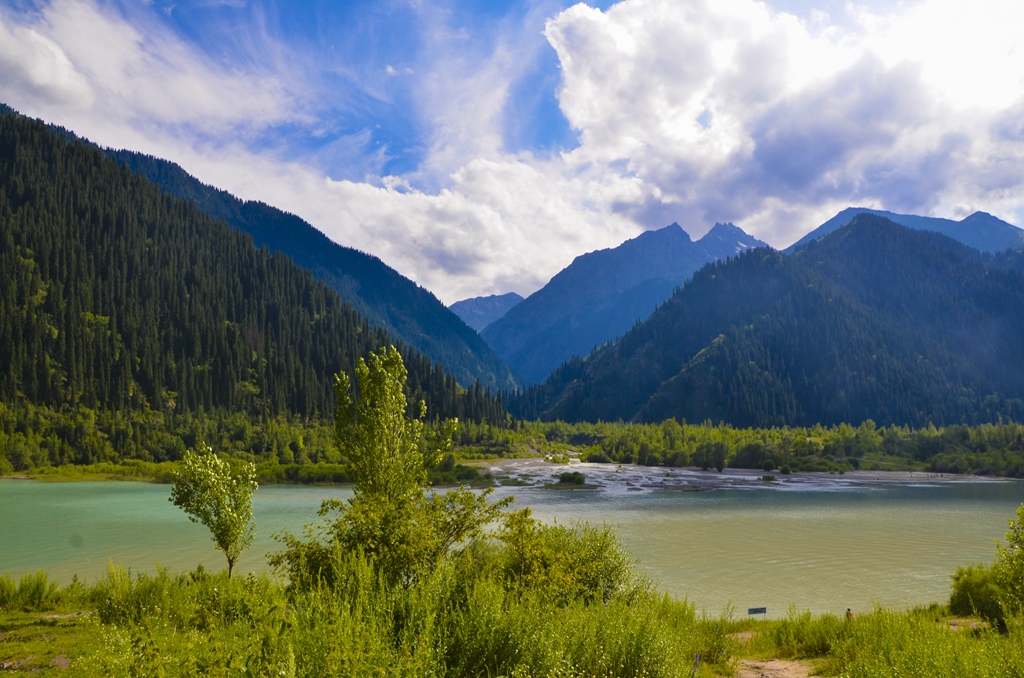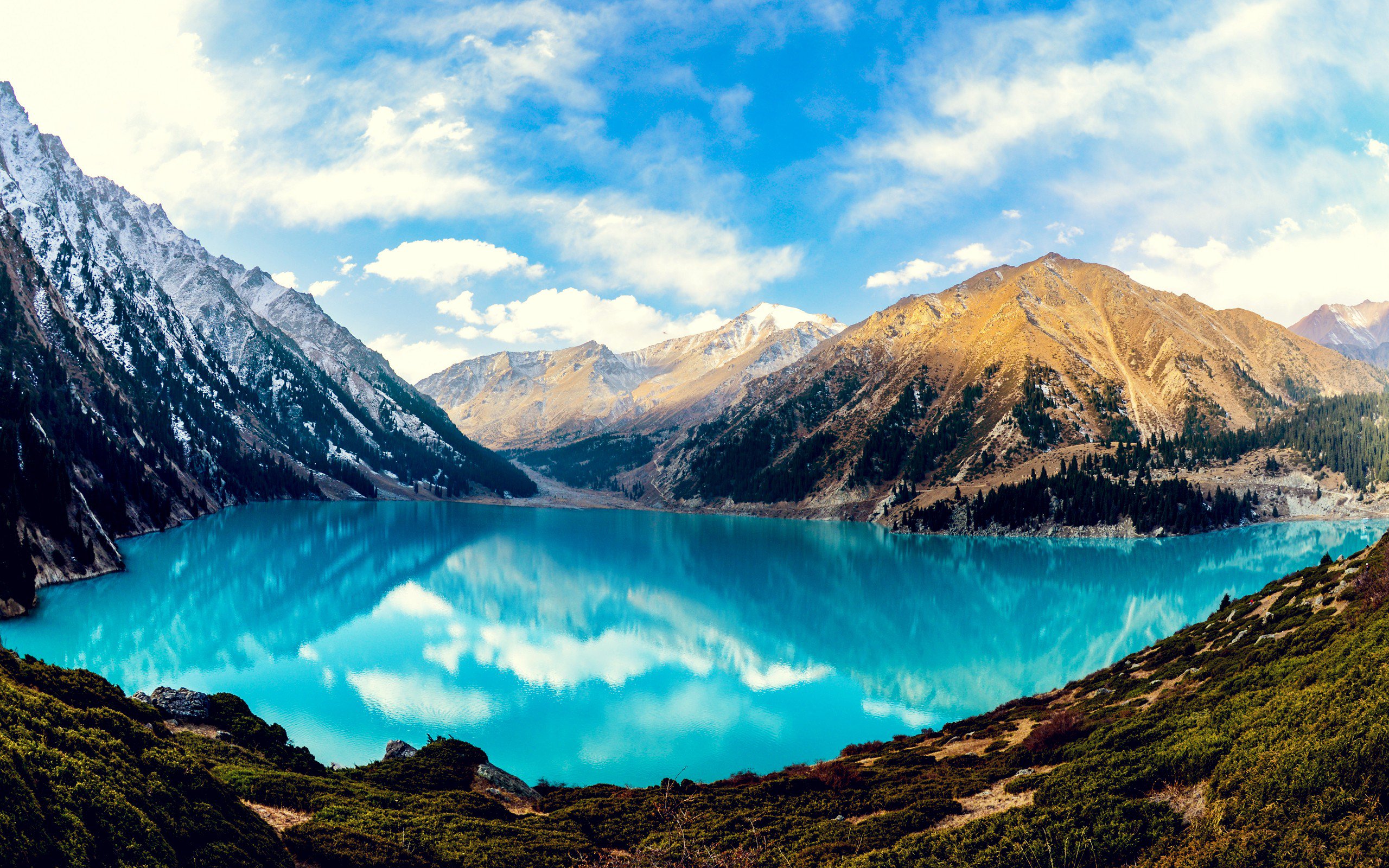Almaty /ˈælməti/ (Kazakh: Алматы, Almaty [ɑlmɑˈtə]; Russian: Алматы), formerly known as Alma-Ata /ˌælmə.əˈtɑː/ (Russian: Алма-Ата) and Verny (Russian: Верный/Verný), is the largest city in Kazakhstan, with a population of 1,703,481 people, containing 9% of the country's total population. It served as capital of the Kazakh state in its various forms from 1929 to 1997, under the influence of the then Soviet Union and its appointees.[3] Alma-Ata was the host city for a 1978 international conference on Primary Health Care where the Alma Ata Declaration was adopted, marking a paradigm shift in global public health. In 1997, the government relocated the capital to Nur Sultan in the north of the country.
Almaty continues as the major commercial and cultural centre of Kazakhstan, as well as its biggest population center. The city is located in the mountainous area of southern Kazakhstan in the foothills of the Trans-Ile Alatau at an elevation of 700–900 m (2,300–3,000 feet), where the Large and Small Almatinka rivers run into the plain.
From 1929 to 1936, Almaty was the capital of Kazakh ASSR. From 1936 to 1991 it was the capital of Kazakh SSR. After Kazakhstan became independent in 1991, Almaty continued as the capital until 1997, when Nur Sultan was designated a return to the historic capital.
Almaty remains the largest, most developed, and most ethnically and culturally diverse city in Kazakhstan. Due to development by the Soviet Union and relocation of workers and industries from European areas of the Soviet Union during World War II, the city has a high proportion of ethnic Russians and Ukrainians. The city is in the foothills of Trans-Ile Alatau (or ZaIleysky Alatau) in the extreme south-east.
It has a relatively mild climate with warm summers and quite cold winters. Since the city is in a tectonically active area, it has an endemic risk of earthquakes. Although most do not cause any significant damage, Almaty has suffered some large destructive earthquakes.
In 1997 the capital was moved to Nur Sultan in the north-central part of the country. Since then Almaty has been referred to as the 'southern capital' of Kazakhstan.
The name Almaty has its roots in the medieval settlement Almatu, that existed near the present-day city.[5] A disputed theory holds that the name is derived from the Kazakh word for 'apple' (алма), and is often translated as "full of apples". Originally it was Almatau which means Apple Mountain. The Russian version of the name was Alma-Ata (Kaz. Father of Apples), however, since gaining its independence from Russia, the use of the Kazakh Almaty is accepted.
There is great genetic diversity among the wild apples in the region surrounding Almaty; the region is thought to be the apple's ancestral home. The wild Malus sieversii is considered a likely candidate for the ancestor of the modern domestic apple.
The city's name was written as آلماتی in Turkish and Persian written with the Perso-Arabic script.
The climate in Almaty is a humid continental climate (Köppen climate classification: Dfa) with hot summers and cold winters. It is characterized by the influence of mountain-valley circulation. This is especially evident in the northern part of the city, located directly in the transition zone of the mountain slopes to the plains.
Nur-Sultan
Base Information
3557
Region :Kazakhstan Almaty
Address:Almaty city, Kazakhstan








